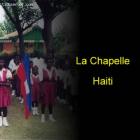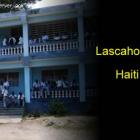ADVERTISEMENT
Haiti
L'Ile de la Tortue or Tortuga Island in Haiti
To speak of Tortuga in Haiti, is to conjure up the swashbuckling remnants of the piratical past of the Caribbean, as its representation in literature and the modern entertainment media casts it, almost always, in that quixotically classic light. But Tortuga is more than just pirate stories, more than just a little island off the north coast of Haiti.
Named by Columbus, who, upon happening on the isle in 1492, forming out of the mist of the morning, likened its shape to that of a turtle, it was initially settled by colonists from Spain, but, first made a colony of Santo Domingo by the French. More people would eventually come, as, in the first quarter of the 1600's, additional French settlers, along with some English ones, would travel there. These new residents would, however, face an attack four years later by Don Fadrique de Toledo, who would see to their expulsion before fortifying the island.
Grande-Riviere-du-Nord Modernization will bring Tourist Dollars
In the Nord Department of Haiti lies Grande-Rivière-du-Nord, part of its Arrondissement that observed the 300th anniversary of its founding at St. Rose de Lima Church.
The city is one of the few places in Haiti to possess a large population of people living to 100 years of age. No one knows exactly why, but future studies may give up some answers.
A place of historical interest in Grande-Rivière-du-Nord is Gallifet Plantation where Haiti's slave revolt began, motivated by Voodoo rites.
Many of Haiti's rulers have been born in Grande-Rivière-du-Nord, among them first ruler, Jean-Jacques Dessalines. It has also been the birthplace of Haiti's intelligentsia: Jean Price Mars, who pioneered the Negritude movement, inspiring the Black is Beautiful slogan of the 60s.
The city of Grand Goave facing its challenges head on
The city of Grand Goâve has existed since at least the 16th century. First colonized by the Spanish and then the French, Goâve was split into two cities, Grand-Goâve and Petit-Goâve.
When the earthquake of 2010 slammed into Haiti, Grand-Goâve suffered demolishment of its infrastructure. Every city building collapsed, schools crumbled, and City Hall and the police station were turned to rubble. The shaking produced a landslide that became a dam. When the rains came, the dam waters overflowed its banks and flooded Grand- Goâve. The U.S. and Catholic Relief Services provided disaster aid and participated in reconstruction efforts.
Ravine-a-Couleuvres - Battle of Snake Gully Saves Gonaives from French Capture
Gonaïves lies in the north of Haiti, part of Artibonite Department. With a population of 300,000, it has become recognized as Independence City. It was in Gonaïves Haiti achieved her independence from France in 1804.
A pivotal battle was fought close by Gonaïves in 1802 by General Louverture at Ravine-a-Couleuvres, a French stronghold. Louverture, on his way to help General Vernet defend Gonaïves, collided with French General de Rochambeau in the Battle of Snake Gully. The encounter gave Vernet time to torch Gonaïves before escaping with his army, to prevent French occupation.
Two years later on January 1, 1804, Haiti's first ruler, Jean-Jacques Dessalines, proclaimed Haiti's independence with the Act of Independence read in Place d'Armes at Gonaïves.
Acul-du-Nord in Nord Department of Haiti
In the country's northern part lies the Nord Department, which is made up of Acul-du-Nord Arrondissement that is composed of three municipalities, namely Acul-du-Nord, Plaine-du-Nord and Milot. The department is home to more than 100,000 Haitians.
The municipality of Acul-du-Nord, often referred to as Akil dinò in Creole. It is divided into six small towns: Bas de l'Acul, Camp Louise, Coupe a David, Grande Ravine, La Soufriere, and Mornet.
Acul-du-Nord is the home of 51,337 Haitians who concentrate on agriculture as their main source of livelihood. The common produce in the municipality are coffee, different kinds of fruits, and rice. Haitians in this region also practice beekeeping for attaining honey and selling this in the local market and in foreign trade. Majority of Acul-du-Nord's population are Roman Catholics due to the introduction of Christianity in the 1600s by Haiti's European colonizers. One of the earliest marks of Christianity in the municipality is the Camp Louise Parish located in the town of Camp Louise, which was built and completed in 1699 by the colony's former governor, Saint Domingue.
Casal with its Polish influence
Casal is a small Haitian city located in the North American region and has a very small population. Port-au-Prince, Carrefour and Guantanamo are the major cities that can be found close to Casal. Casal has a significant Polish influence and many people are baffled by the fact that Poland and Casal are not close to each other and yet, Casal has a huge Polish influence. This revolution can however be traced back to the era of Haitian Revolution.
It was during 1802 when Napoleon arrived with his army at Saint Domingue to take care of the slave rebellion. The army consisted of Polish legion. Napoleon dispatched 5200 Polish soldiers for Saint Domingue to suppress the revolt. Upon arrival, these Polish soldiers found that it was not the rebellion mentioned by Napoleon but was actually a slave revolt in which the slaves were fighting for their freedom.
"Anrejistreman La Pou La" Birth certificate and National Identification Cards, campaign in Haiti
How important is a piece of paper? When one asks the hundreds of thousands of Haitians who are without the most basic form of identification, the response is more than likely that it is very important. Therefore, it is with great enthusiasm that the public has met President Michel Martelly's initiative to bestow on hundreds of thousands of unregistered Haitians the right of their birth certificates and National Identification Cards.
The drive started recently in Belle Anse's second communal section, Mare Briole. Called Anrejistreman La Pou La, the Martelly Government intends to bestow the papers on some 10,000 people in the area, most of whom are said to be over twenty years of age.
Jeremie - Haiti the City Of Poets
Jérémie is located in the Jeremie Arrondissement in Haiti and is the capital city of the Grand'Anse Department. It was founded in 1756. Navasa Island is located around 40 nautical miles to the west of the city.
The City Of Poets
Numerous historians, writers as well as poets were born in Jeremie city and hence it is termed as the city of poets. Prominent writers such as Etzer Vilaire and Emile Roumer were born here. General Thomas-Alexandre Dumas, the father of Alexandre Dumas Pere a historic novelist, was born in Jeremie. Very close to the city, flows the Grand-Anse River.
The Court of Jacmel, Restoring over 100 years of history
Three years ago, the Court of First Instance in Jacmel was a crumbled heap that didn't bode well for restoration plans. Even the engineer who would eventually oversee the restoration effort, Jean-Marie Dutreuil, thought the once-proud, 100 year old building was fit only to be leveled to the ground. It is the good fortune of the city, the country and the many inmates overrun in the Jacmel prison who are awaiting trial that a little bit of faith was extended, and a very important part of Haiti's judicial history will be fit to stand for at least another 100 years.
Cap-Haitian's Immortal Baroque Beauty Mesmerizes Visitors
Cap-Haitian ranks as the second most populated Haitian city next to Port-au-Prince, numbering 190,000 residents. A coastal city grazing the North Coast, it is the nexus of a thriving farming community. Its biggest exports include tropical fruits, sugar, and premium coffee beans.
Cap-Haitian was colonized in the 1700s by the French, who turned it into the wealthiest center in the Caribbean region. The French sense of baroque beauty transformed the city into "The Paris of the West". Henri Christophe, one of Haiti's earliest rulers, made Cap-Haitien the original capital of North Haiti. Eponymously, he named it Cap Henry.
Our objective is to share with you news and information about Haiti and the people of Haiti. Traditions, habits and the way we were or grew are alive in this site. We highly recommend that you Subscribe to our Newsletter and also share with us some of the things that are memorable and made us unique people.

 La Chapelle, Haiti
La Chapelle, Haiti  Battle of Vertieres
Battle of Vertieres  Lascahobas, Haiti
Lascahobas, Haiti  Haitian Creole Translation
Haitian Creole Translation  Something to think about
Something to think about